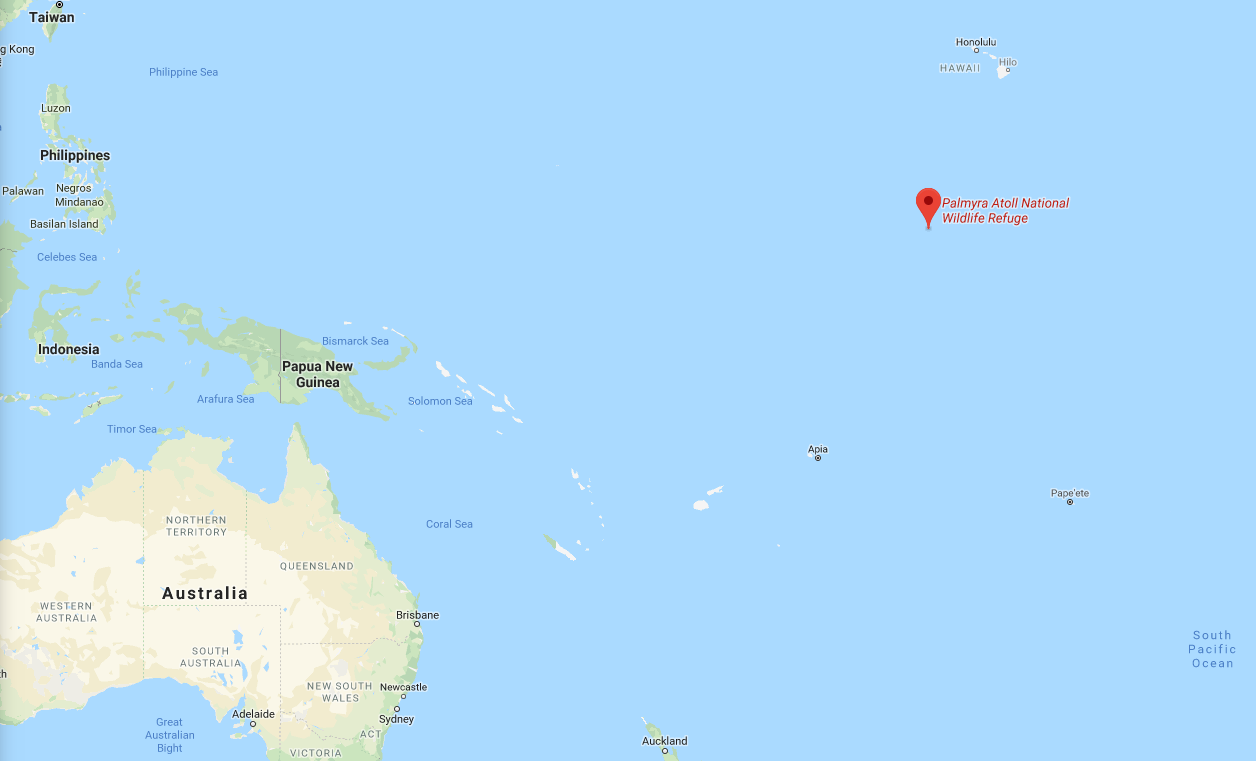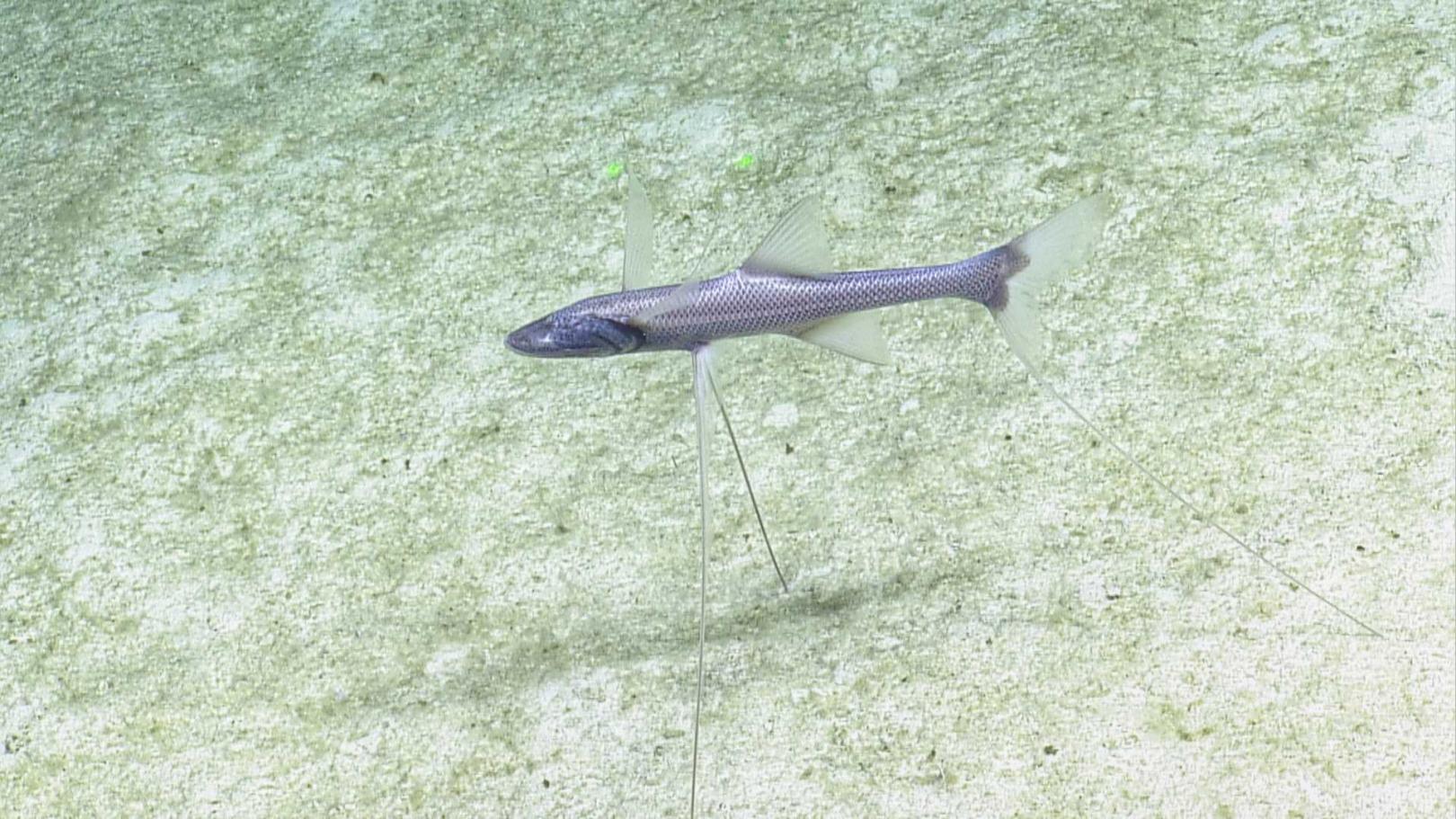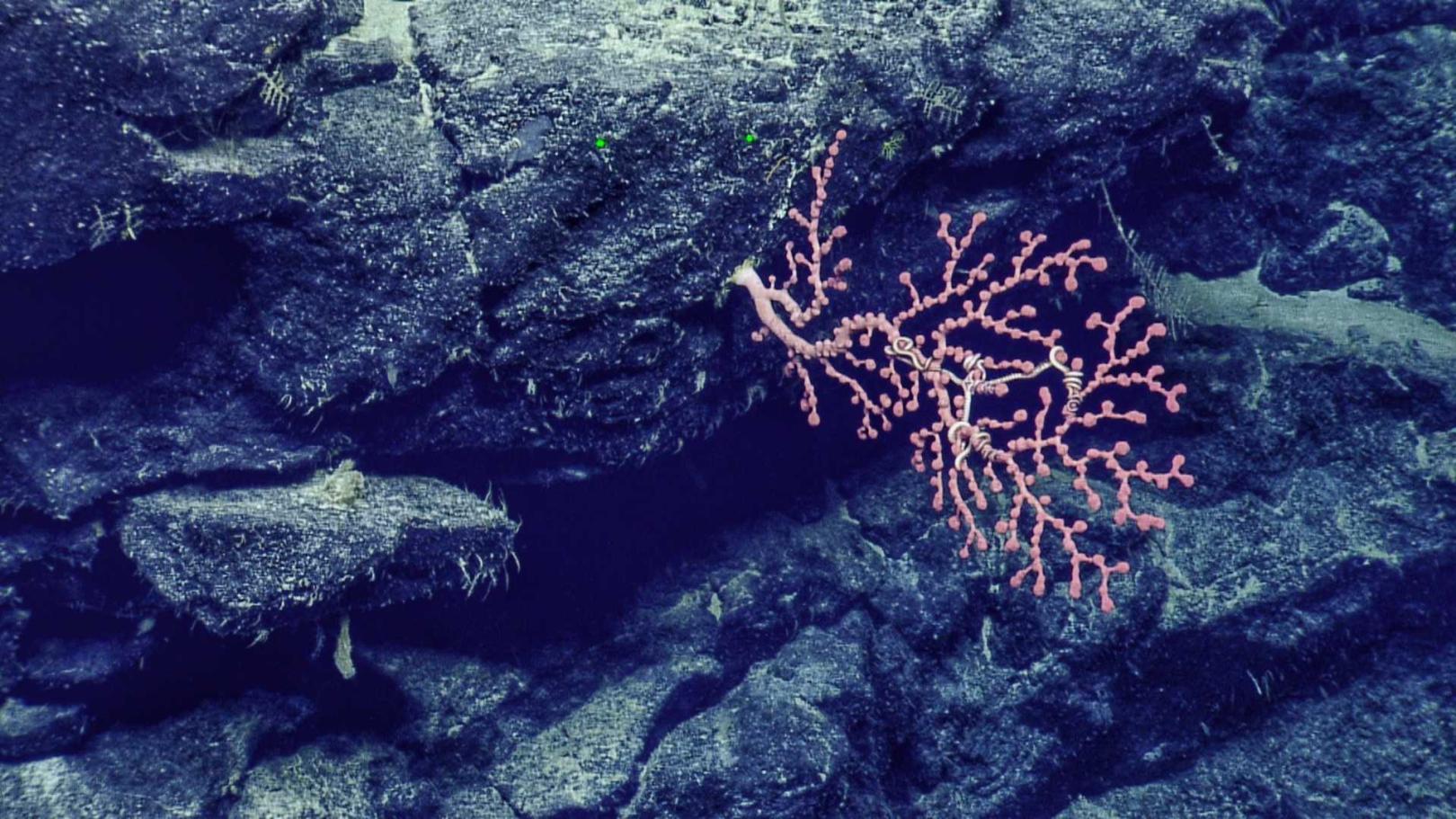
Date:

After 12 hours of flying on June 22nd I arrived in Honolulu and met up with the rest of the Corps of Exploration sailing on this cruise. On June 23rd, we made our way to the ship for our first night on the water, albeit still in port. Then, in the early afternoon of June 24th, we set sail!
Our first dive location was about a 4 day transit south from Honolulu. During these days of transit there was plenty of work to be done to prepare for our first deep water dives. Our mappers/navigators were using the hull-mounted sonar mapping system to create seafloor maps as we move along our route, ROV engineers were prepping the vehicles ROV Hercules and ROV Argus, and lead scientists Dr. Rob Pockalny of University of Rhode Island and Steve Auscavitch of Temple University gave presentations about the objectives of the cruise, both biological and geological.
About 2 days into transiting across the ocean, we came to a stop at a predetermined site to launch a few drifters for our expedition and educational partnerships.
We launched a small drifting sailboat called The Perry, an Educational Passages mini-boat built by high school students at Anderson W. Clark Magnet High School in Glendale, California. Equipped with a GPS tracker and various sensors, those students, as well as the public, can follow The Perry’s journey in the open ocean! Students hope it will make it’s way along the equatorial current to Japan. You can follow along with The Perry’s journey through the Educational Passages website here.
Once our transit to the first dive location was complete, it was time to really begin exploring! Our first location was a deep water ridge off of Kingman Reef. In years past, the NOAA Explorer ship Okeanos mapped this area and used ROVs to explore the northern side of this feature. By choosing a site on the SW side of Kingman Reef, our lead researchers hope to get a better idea of the full range of biological diversity of this remote area. Below are a few captures from our dive, taken by the HD cameras mounted on both ROVs Hercule and Argus.


After a successful first dive, we transited to another location contained within the Pacific Remote Islands Marine National Monument, Palmyra Atoll. This area is managed by US Fisheries and Wildlife and is currently inhabited by a team of conservationists from The Nature Conservancy. Their job is to help keep the flora and fauna of that island healthy as well as to conduct scientific research. Their field station is mostly run by solar power, but since it is rare for a ship to pass through the area, we made a short stop to drop off some fuel for their backup generator. They reciprocated with a bin full of fresh coconuts for the whole ship! Coconuts may be invasive to the island (and the team is working to bring back a balance of native plants), but they were certainly a welcomed treat on board the E/V Nautilus!
After getting an offshore view of the Atoll, it was time for us to explore the deep waters contained within this protected area during a 24 hour dive on enigmatic seafloor features called cones and moats. See the mapping imagery used to plan the dive below.
Our Lead Geologist on board, Dr. Robert Pockalny, has spent much of his professional career researching the morphology, abundance, and formation of small volcanic cone features on the seafloor, including these moats in the Central Pacific. The cones we visited on this dive were of particular interest because each had a depression in the seafloor, referred to as a moat, at the base of the cones. Our visual surveys and rock samples collected by ROV Hercules will be processed and dated by Kevin Konrad of Oregon State, who is also sailing as a science team member on this cruise.
As I am writing this blog we still have many days of dives to complete, so be sure to stay tuned to nautiluslive.org for highlights from the rest of the cruise. When I return to land I will be completing a third and final installment in this series, with an overview of the entire expedition!
And Happy 4th of July! We may not be able to have the traditional fireworks associated with the holiday out here on the open ocean, but nature provided a beautiful show of its own.


